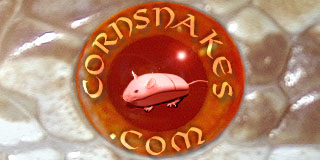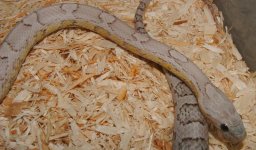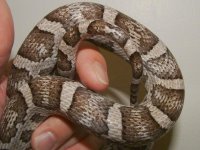One last question. 
Can a Charcoal, Anery B, be identified from phenotype alone?
I have a very large Anery female. She is probably one of the biggest corns I have ever seen. (That is not saying a whole lot. I haven't seen a lot of corns.)
To my untrained eye she looks Charcoal.
She has no yellow at all. A very faint pattern on her head, a barely descernible arrowhead. Overall she is shades of grey, with very little if any brown in the saddles.
Do I have a charcoal or an anery?
I do not have my digital camera or I would post a picture of this pretty girl.
Thanks,
Shari
Can a Charcoal, Anery B, be identified from phenotype alone?
I have a very large Anery female. She is probably one of the biggest corns I have ever seen. (That is not saying a whole lot. I haven't seen a lot of corns.)
To my untrained eye she looks Charcoal.
She has no yellow at all. A very faint pattern on her head, a barely descernible arrowhead. Overall she is shades of grey, with very little if any brown in the saddles.
Do I have a charcoal or an anery?
I do not have my digital camera or I would post a picture of this pretty girl.
Thanks,
Shari


